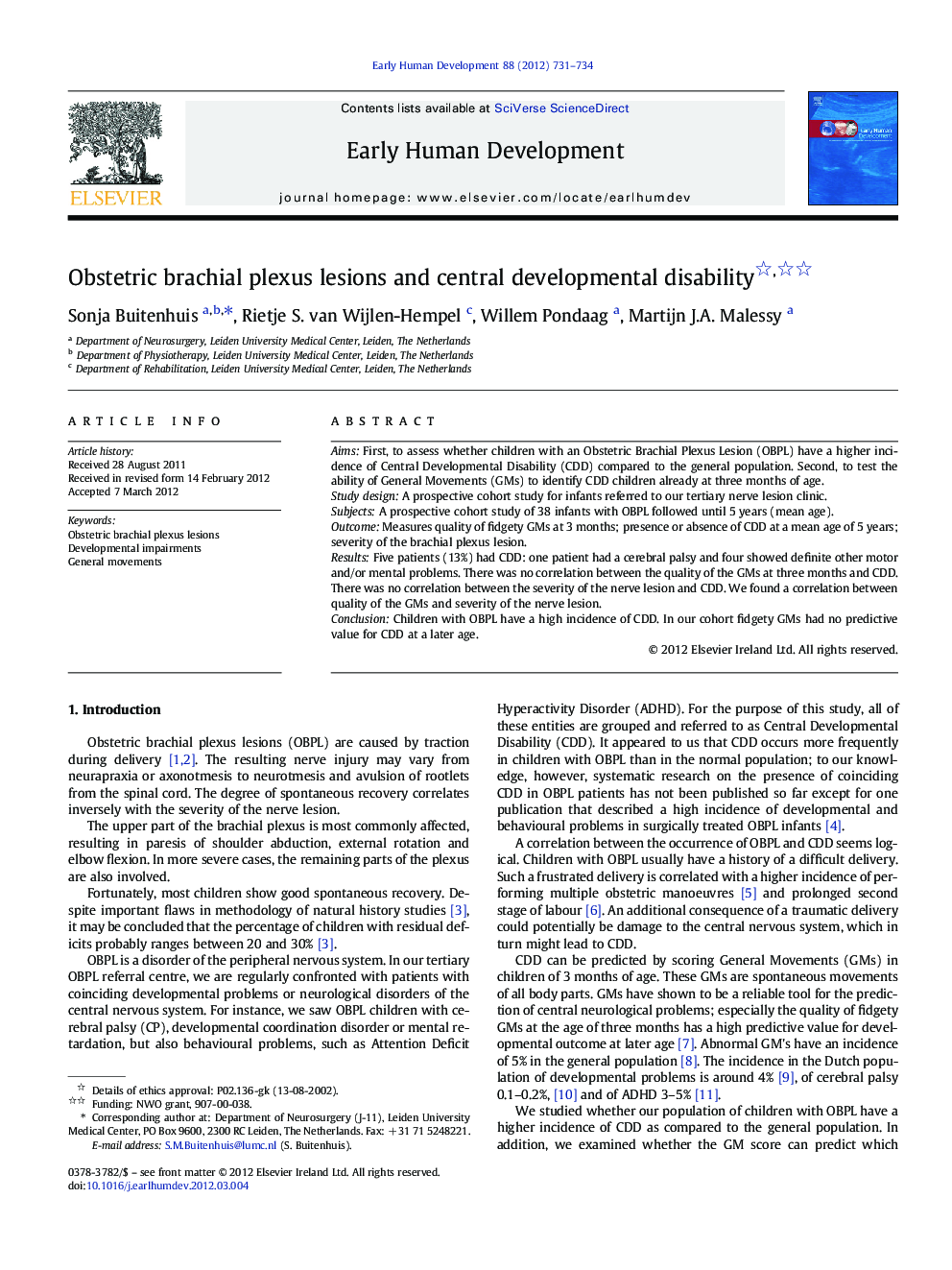| Article ID | Journal | Published Year | Pages | File Type |
|---|---|---|---|---|
| 6172039 | Early Human Development | 2012 | 4 Pages |
AimsFirst, to assess whether children with an Obstetric Brachial Plexus Lesion (OBPL) have a higher incidence of Central Developmental Disability (CDD) compared to the general population. Second, to test the ability of General Movements (GMs) to identify CDD children already at three months of age.Study designA prospective cohort study for infants referred to our tertiary nerve lesion clinic.SubjectsA prospective cohort study of 38 infants with OBPL followed until 5Â years (mean age).OutcomeMeasures quality of fidgety GMs at 3Â months; presence or absence of CDD at a mean age of 5Â years; severity of the brachial plexus lesion.ResultsFive patients (13%) had CDD: one patient had a cerebral palsy and four showed definite other motor and/or mental problems. There was no correlation between the quality of the GMs at three months and CDD. There was no correlation between the severity of the nerve lesion and CDD. We found a correlation between quality of the GMs and severity of the nerve lesion.ConclusionChildren with OBPL have a high incidence of CDD. In our cohort fidgety GMs had no predictive value for CDD at a later age.
